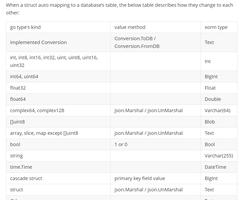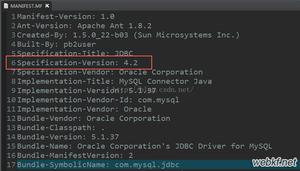postgresql如何升级[postgresql教程]

1、背景
一般来说,数据库的升级很少遇到,除非确实出现了新的业务需求或者系统bug无法解决的情况下才选择升级。本文基本测试了一下pg9.6升级到10.5的过程,没有遇到太大的问题。
2、升级
之前博客中有介绍,其实postgresql和mysql" title="postgresql和mysql">postgresql和mysql的安装逻辑结构很相似,数据和程序时分开的,启动时候指定启动的数据目录,当然数据目录是可以放在配置文件中。今天测试了一下使用pg10.5的版本去打开pg9.6版本初始化的数据库出现了错误,错误中显示的是数据库文件不兼容。
[postgres@pgmaster ~]$ pg_ctl -D /data/pgdata/ startwaiting for server to start....2019-10-08 16:56:20.203 CST [35441] FATAL:database files are incompatible with server
2019-10-08 16:56:20.203 CST [35441] DETAIL:The data directory was initialized by PostgreSQL version 9.6, which is
not compatible with this version 10.5.
stopped waiting
pg_ctl: could not start server
Examine the log output.
2.1 升级工具
在程序的bin目录下,提供了很多的数据库工具,有一个pg_upgrade的工具就是专门用于数据库升级的。关于该工具可以使用帮助命令来查看具体的用法:
[postgres@pgmaster pgdata]$ pg_upgrade --helppg_upgrade upgrades a PostgreSQL cluster to a different major version.
Usage:
pg_upgrade [OPTION]...
Options:
-b, --old-bindir=BINDIR old cluster executable directory
-B, --new-bindir=BINDIR new cluster executable directory
-c, --check check clusters only, don't change any data
-d, --old-datadir=DATADIR old cluster data directory
-D, --new-datadir=DATADIR new cluster data directory
-j, --jobs number of simultaneous processes or threads to use
-k, --link link instead of copying files to new cluster
-o, --old-options=OPTIONS old cluster options to pass to the server
-O, --new-options=OPTIONS new cluster options to pass to the server
-p, --old-port=PORT old cluster port number (default 50432)
-P, --new-port=PORT new cluster port number (default 50432)
-r, --retain retain SQL and log files after success
-U, --username=NAME cluster superuser (default "postgres")
-v, --verbose enable verbose internal logging
-V, --version display version information, then exit
-?, --help show this help, then exit
Before running pg_upgrade you must:
create a new database cluster (using the new version of initdb)
shutdown the postmaster servicing the old cluster
shutdown the postmaster servicing the new cluster
When you run pg_upgrade, you must provide the following information:
the data directory for the old cluster (-d DATADIR)
the data directory for the new cluster (-D DATADIR)
the "bin" directory for the old version (-b BINDIR)
the "bin" directory for the new version (-B BINDIR)
For example:
pg_upgrade -d oldCluster/data -D newCluster/data -b oldCluster/bin -B newCluster/bin
or
$ export PGDATAOLD=oldCluster/data
$ export PGDATANEW=newCluster/data
$ export PGBINOLD=oldCluster/bin
$ export PGBINNEW=newCluster/bin
$ pg_upgrade
Report bugs to <pgsql-bugs@postgresql.org>.
帮助文件中,提到了使用pg_upgrade工具前,必须创建一个新的数据库,并且是已经初始化的,同时关闭原来的数据库和新的数据库。使用pg_upgrade时候,必须要加上前后版本的data目录和bin目录。
2.2 升级过程
首先确认的是,原来的数据库版本是pg9.6,数据目录在/data/pgdata。然后,安装完pg10.5后,不要初始化目录。
将原来的9.6版本数据目录重命名为pgdata.old
mv /data/pgdata /data/pgdata.old
在/data/下创建一个pgdata目录,作为新版本的数据库数据目录,需要注意的是,这个目录权限是700,owner是postgres
cd /data/mkdir pgdata
chmod 700 pgdata
chown -R postgres.postgres pgdata
使用pg10.5的initdb初始化/data/pgdata目录
initdb -D /data/pgdata
进行升级check,注意后面加上-c,这一步只是检查不会实际执行升级。所有项都是ok即认为是可以升级。
[postgres@pgmaster ~]$ pg_upgrade -b /usr/local/pgsql-9.6/bin -B /usr/local/pgsql/bin/ -d /data/pgdata.old/-D /data/pgdata -p 5432 -P 5432 -c
Performing Consistency Checks
-----------------------------
Checking cluster versions ok
Checking database user is the install user ok
Checking database connection settings ok
Checking for prepared transactions ok
Checking for reg* data types in user tables ok
Checking for contrib/isn with bigint-passing mismatch ok
Checking for invalid "unknown" user columns ok
Checking for hash indexes ok
Checking for presence of required libraries ok
Checking database user is the install user ok
Checking for prepared transactions ok
*Clusters are compatible*
执行升级。即在上一步去掉-c,需要注意的是这一步根据数据库的大小执行时间长短不一,执行完毕后会产生两个脚本analyze_new_cluster.sh和delete_old_cluster.sh,根据实际需要来进行执行,一般都会执行第一个脚本,第二个不建议执行,以防需要回滚升级,保留原来的数据目录比较保险。
[postgres@pgmaster ~]$ pg_upgrade -b /usr/local/pgsql-9.6/bin -B /usr/local/pgsql/bin/ -d /data/pgdata.old/-D /data/pgdata -p 5432 -P 5432
Performing Consistency Checks
-----------------------------
Checking cluster versions ok
Checking database user is the install user ok
Checking database connection settings ok
Checking for prepared transactions ok
Checking for reg* data types in user tables ok
Checking for contrib/isn with bigint-passing mismatch ok
Checking for invalid "unknown" user columns ok
Creating dump of global objects ok
Creating dump of database schemas
ok
Checking for presence of required libraries ok
Checking database user is the install user ok
Checking for prepared transactions ok
If pg_upgrade fails after this point, you must re-initdb the
new cluster before continuing.
Performing Upgrade
------------------
Analyzing all rows in the new cluster ok
Freezing all rows in the new cluster ok
Deleting files from new pg_xact ok
Copying old pg_clog to new server ok
Setting next transaction ID and epoch for new cluster ok
Deleting files from new pg_multixact/offsets ok
Copying old pg_multixact/offsets to new server ok
Deleting files from new pg_multixact/members ok
Copying old pg_multixact/members to new server ok
Setting next multixact ID and offset for new cluster ok
Resetting WAL archives ok
Setting frozenxid and minmxid counters in new cluster ok
Restoring global objects in the new cluster ok
Restoring database schemas in the new cluster
ok
Copying user relation files
ok
Setting next OID for new cluster ok
Sync data directory to disk ok
Creating script to analyze new cluster ok
Creating script to delete old cluster ok
Checking for hash indexes ok
Upgrade Complete
----------------
Optimizer statistics are not transferred by pg_upgrade so,
once you start the new server, consider running:
./analyze_new_cluster.sh
Running this script will delete the old cluster's data files:
./delete_old_cluster.sh
执行脚本前,需要先启动数据库pg_ctl -D /data/pgdata start
[postgres@pgmaster ~]$ pg_ctl -D /data/pgdata startwaiting for server to start....2019-10-08 17:18:51.402 CST [35827] LOG: listening on IPv6 address "::1", port 5432
2019-10-08 17:18:51.402 CST [35827] LOG: listening on IPv4 address "127.0.0.1", port 5432
2019-10-08 17:18:51.408 CST [35827] LOG: listening on Unix socket "/tmp/.s.PGSQL.5432"
2019-10-08 17:18:51.437 CST [35828] LOG: database system was shut down at 2019-10-08 17:16:11 CST
2019-10-08 17:18:51.442 CST [35827] LOG: database system is ready to accept connections
done
server started
执行脚本./analyze_new_cluster.sh,从运行日志来看,主要是创建统计信息
[postgres@pgmaster ~]$ ./analyze_new_cluster.shThis script will generate minimal optimizer statistics rapidly
so your system is usable, and then gather statistics twice more
with increasing accuracy. When it is done, your system will
have the default level of optimizer statistics.
If you have used ALTER TABLE to modify the statistics target for
any tables, you might want to remove them and restore them after
running this script because they will delay fast statistics generation.
If you would like default statistics as quickly as possible, cancel
this script and run:
"/usr/local/pgsql/bin/vacuumdb" --all --analyze-only
vacuumdb: processing database "postgres": Generating minimal optimizer statistics (1 target)
vacuumdb: processing database "template1": Generating minimal optimizer statistics (1 target)
vacuumdb: processing database "test": Generating minimal optimizer statistics (1 target)
vacuumdb: processing database "postgres": Generating medium optimizer statistics (10 targets)
vacuumdb: processing database "template1": Generating medium optimizer statistics (10 targets)
vacuumdb: processing database "test": Generating medium optimizer statistics (10 targets)
vacuumdb: processing database "postgres": Generating default (full) optimizer statistics
vacuumdb: processing database "template1": Generating default (full) optimizer statistics
vacuumdb: processing database "test": Generating default (full) optimizer statistics
Done
至此,查看version,发现已经由原来的9.6升级为10.5,升级结束。
postgres=# select version();version
---------------------------------------------------------------------------------------------------------
PostgreSQL 10.5 on x86_64-pc-linux-gnu, compiled by gcc (GCC) 4.8.5 20150623 (Red Hat 4.8.5-39), 64-bit
(1 row)
Python学习网,大量的免费PostgreSQL入门教程,欢迎在线学习!
以上是 postgresql如何升级[postgresql教程] 的全部内容, 来源链接: utcz.com/z/526488.html









